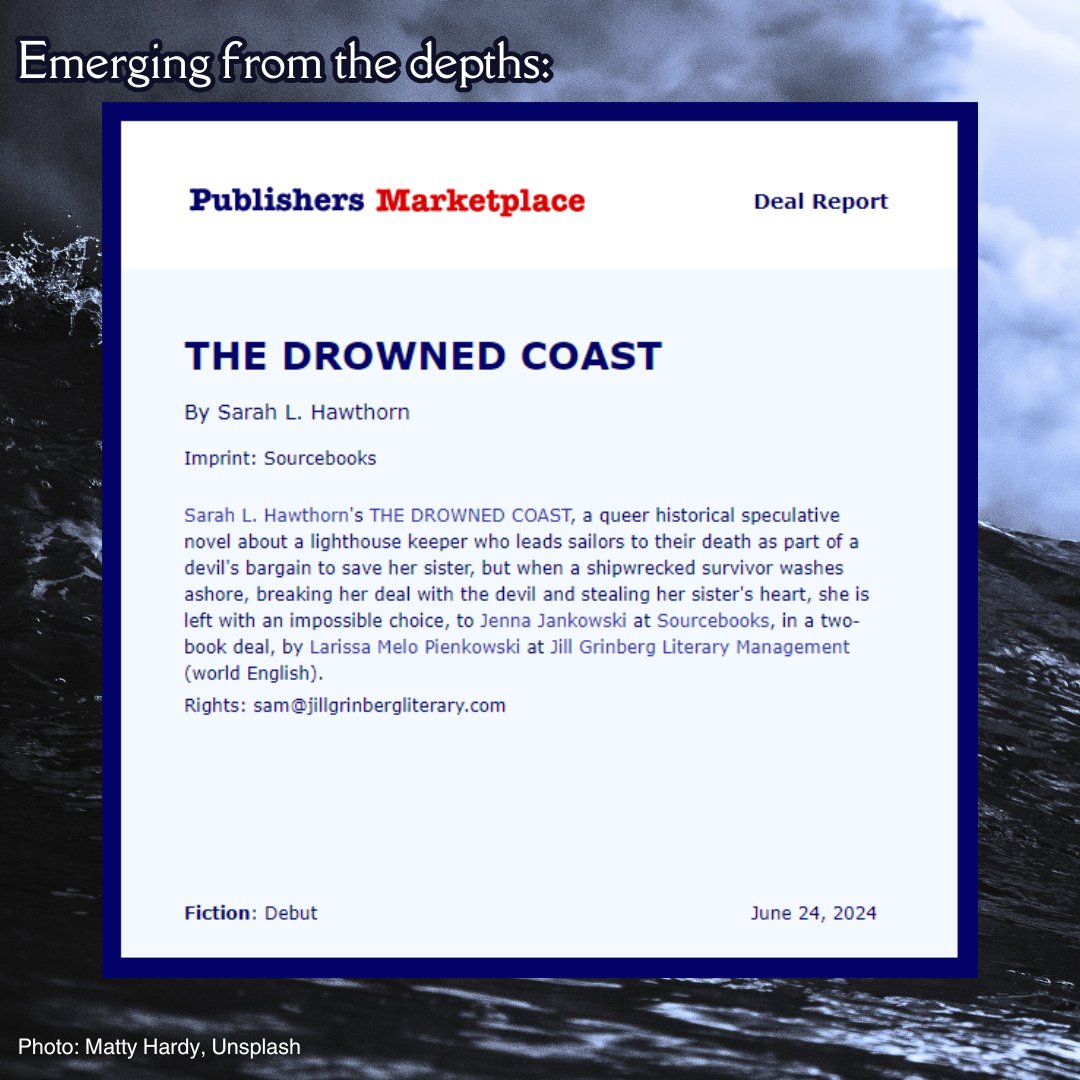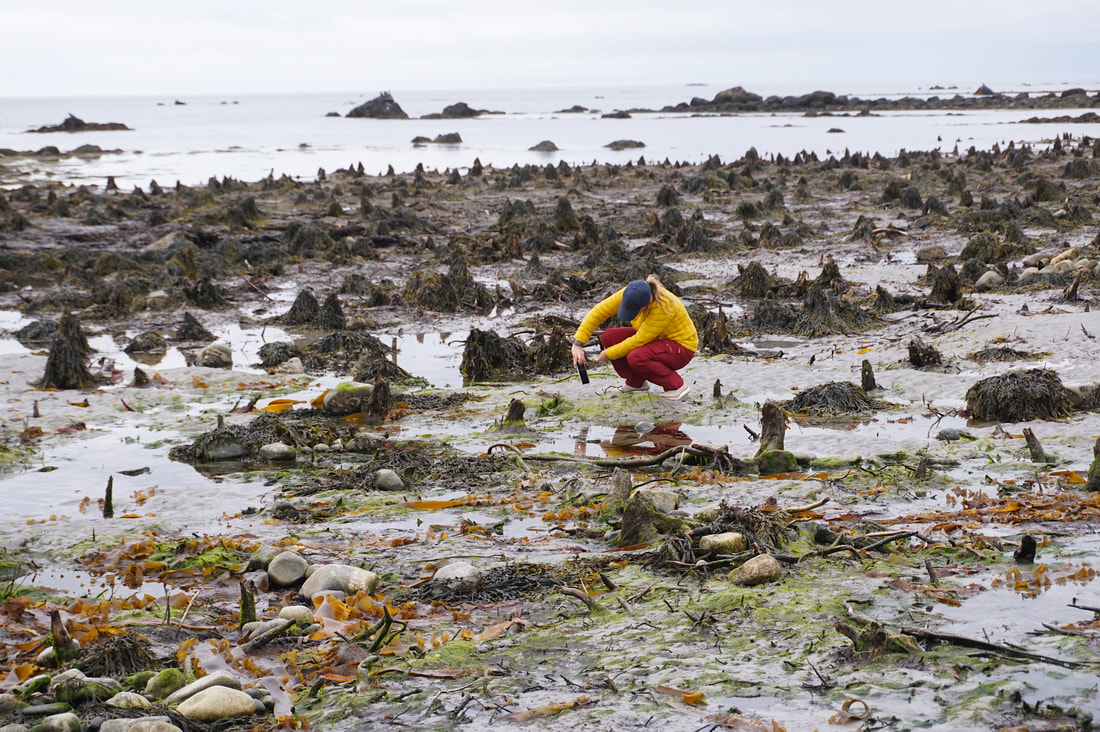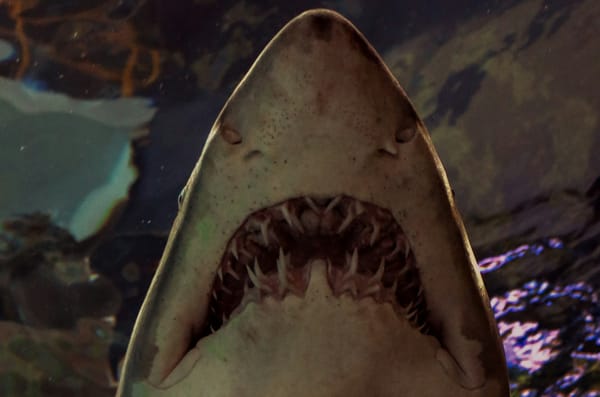The Frog Pond #20: I GOT A BOOK DEAL!
My speculative historical novel, THE DROWNED COAST will be published by Sourcebooks in Fall 2025!

I can finally talk about it! Scream from the rooftops! Whisper to my cat as she waits for me to throw the mouse toy already!
My speculative historical novel, THE DROWNED COAST (or as I've talked about it here since the very first Frog Pond, lighthouse book!) will be published by Sourcebooks in Fall 2025! Read all my excitement and thanks on Instagram, Twitter, BlueSky, or Threads. I even have a fancy graphic:

Today's topic is related to the title of the book! And there's more screaming down in the writing section :)
What is a drowned coast?
Also called a submerged coastline, a drowned coast is exactly what it sounds like; coastline that has been swallowed up by the sea1. You can find drowned coasts in all over the world, such as in Western Norway, the Western Coastal Plains of the Indian subcontinent, Southern England and South Wales, and the Dalmatian coasts of Croatia1.
A river variety of drowned coast is called a ria2, also called an estuary or drowned river valley, where sea water rises to enter river valleys3 such as the River Exe estuary in England and seaward regions of the Hudson River, Chesapeake Bay, Delaware Bay, Galveston Bay, and Tampa Bay4. There are also fjord-type estuaries and tectonically produced estuaries.
An estuary creates a circulation pattern when a river's fresh water flows over the ocean's salt water and cause the nutrient-rich water at the bottom to be drawn up to the surface5. Estuaries can be incredibly biodiverse environments as a salt marsh ecosystem and valuable conservative areas for waterfowl6.
Local drowned coasts
Nova Scotia (where my book is set!) has many estuaries, including the Pugwash Estuary as well as the Kejimkujik National Park lagoon estuaries to name a few7. The Kejimkujik estuaries have been under restoration due to a hyper-abundant, invasive species of European green crab introduced in the 1980s and their impact on the eelgrass of the area7.
(Another Frog Pond #1 callback: Everything becomes crab!)
Eelgrass is a "keystone species" (a species that's very important to the area, disproportionate to its abundance) because of its enhancement on the biodiversity and productivity of the underwater meadows it creates in the lagoons. When the eelgrass declines (only 2% of the eelgrass coverage remained in 2010 compared to 1987), many native species to the area decline as well as the soft-shell clam and shore birds.
But good news! Conservation efforts have gained 10% of eelgrass coverage yearly with a return of over 1/3rd original eelgrass coverage to date! Many animals have begun recovery in the area, including Canada Geese and native marine invertebrates that haven't been observed in the area in a decade7.
Drowned islands
Many islands across Nova Scotia have drowned coasts due to erosion and ocean levels rising, such as Wedge Island, a tidal island (separated from the mainland at high-tide) of roughly 200m wide (based on Google Maps) near Liscomb, Nova Scotia8. In a blog post about the tiny island, Lesley Choyce describes:
"Wedge Island is a forgotten domain on the edge of the continent [and] you feel the thrill of being at sea, on a diminishing finger of land soon to be swallowed by the waves. In the pools between the rocky ridges, rockweed grows in abundance. If you wade ankle deep in the water, you can feel the icy sting, like sharp knives against your skin, and marvel at the colours: russet and rust, reds and tawny dulce, golden golden fronds. White and black barnacles are rivetted to the tidal limits of the rocks and crawling everywhere along the edges is an infinity of patient periwinkles."8
Lesley's description reminds me so much of trips along the maritime coastlines throughout my childhood. I grew up with summer trips along gray, rocky shores, scouring coastal cliffs for fossils, and mucking through drowned coasts in search of tidepools.
Drowned trees
Shores aren't the only biome in Nova Scotia that can drown. Cape Sable Island on Nova Scotia's south shore has an entire 1500-year old drowned forest of fossilized tree stumps!9

The forest was drowned due to the 14 feet of sea level rising over the past 250 years. This rise submerged the stumps and buried them in sand, preserving them9.
What's the book connection?
Devils Island, where my book takes place, is a tiny island out past the mouth of Halifax Harbour. It was once home to 2 lighthouses and up to 18 houses, but is now deserted with 1 automatic lighthouse.
The island once had a forest, like Cape Sable Island, but a mysterious fire burnt every tree down sometime between the sale of the island and the first permanent residents moving onto it (sometime before the 1830s).
The closest mainland to Devils Island in Eastern Passage is threatened by shoreline erosion, similar to submerged coastlines10.

The drowned coast of my book takes inspiration from elements of the real drowned coasts of Nova Scotia mixed with more... infernal elements (and it's one of my favourite parts of the book!). Creating the fictional world of THE DROWNED COAST with pieces of the island's and lighthouses' history and folklore was such a highlight of writing this book and opened my eyes to the joy of discovery in historical fiction!
(I've kept to the geography and science of the area, but if there's any interest in the folklore of Devils Island I'd love to feature those stories as well!)
A word from a passing frog
SO!! I get to dish what I've been keeping under wraps for months!!
Publishing
This is such a full-circle moment for me. I created The Frog Pond in December 2022, a couple months into querying THE DROWNED COAST. I was excited, nervous, and most of all impatient to get responses--any kind!--from agents.
138 queries and 19 requests later (with many, many, many rejections in between), I signed with my agent in September 2023. I worked with her on a couple rounds of edits (and learned how to make my revision process better!) then went on submission in February 2024.
I got an email from my agent to have a quick zoom call on April 2nd. I thought we might go over my pitches for the next book I'd be working on. I remember telling my SO a few minutes before the call, "there's a 99% chance this is about the next book... but there's that 1% chance it's not."
Well, it was not about the pitches. We had interest! From an editor! The next few weeks are a blur of calls and emails, including a lovely call with my editor at Sourcebooks. Sushi and ice cream was abundant in celebration!
Publishing requires so many things to align; talent, tenacity, editor taste, luck, and often a lot of ice cream. I was lucky enough to match with my publisher (what a thing to get to say!!) after only a few months on submission. It's also the product of over a decade of commitment to my craft and to learning about the publishing industry, as well as the talent of my agent.
Then there's the part you may have read above; it's a two-book deal. I couldn't believe it! I'm sure I shrieked during the call when I learned. Not only does my queer gothic horror get a home, but so does my next project!
The next few months were full of secretive, giddy anticipation before the announcement went live on June 25, 2024. A day before my wedding anniversary, squeezing in at the last minute for a year of big career moments (and lack of career as well--it's been a lot of ups and downs!).
I've gone on at length online about all the people who got me here--writing may be lonely work, but I'm lucky enough to have wonderful people care about me and this project. I've been told I come across as very confident online, but I'm often self-doubting in my creative process. My family and friends have kept my boat sailing like lighthouses along the publishing coast, warmly welcoming me, warning me from danger, and pushing me on with their light.
If you'd like to stay up to date on this book (cover reveal! pre-ordering! blurbs! release date!), stay subscribed to The Frog Pond/follow my social media! And if you think a friend might like this book, please let them know!
Writing
I'm working away at my fantasy dark academia novel. You can imagine I've been a little distracted this month :)
Reading
This month's theme was big SFF books!
Dune by Frank Herbert: I enjoyed this classic space fantasy so much! The production quality of the audiobook was the best I've ever listened to. It was more like a radio drama than anything else. If you can get the audiobook I highly, highly recommend!
The Three-Body Problem by Cixin Liu: Another great read! I enjoyed the Netflix adaption (and watched a bit of the Tencent production) so I had an easier time with the more complex sci-fi concepts than readers going into the series cold.
The Goblin Emperor by Katherine Addison: I'm nearly done and what a delightful book!! I can see why this elves and goblins court intrigue fantasy is a comfort read for so many. Maia is such a great protagonist and the book is bursting with personality.
Life
I'm back into swimming! My local pool was under renovations but recently re-opened. I'm writing this after a 7 am swim. Swimming to me is what meditation is to many others. Counting the laps, regulating my breathing, correcting my form--I could swim all day long. It's so important for all factors of my health to have an active hobby and it fills my energy/dopamine well. I hope I can keep it up!!
I'll be out of the country for a week and a half in July! So if I'm slow to answer online, I'm just having a wonderful time in Switzerland with family :) Hopefully I find something cool in the nature there to share for the next Frog Pond!
Do you like The Frog Pond?
Want to spread weird nature facts with friends?
Excited for my haunted lighthouse book?
Please share this newsletter!
Footnotes
1: https://geographyrevisionalevel.weebly.com/7b-emergent-and-submergent-coastlines.html
2: https://en.wikipedia.org/wiki/Ria
3: https://hdl.handle.net/1969.3%2F24383
4: https://www.usgs.gov/centers/wetland-and-aquatic-research-center
5: https://novascotia.ca/nse/surface.water/docs/NSMuseum_FreshwaterEnvironments.pdf
7: https://parks.canada.ca/pn-np/ns/kejimkujik/nature/conservation/ecosystem-cotier-coastal
8: https://lesleychoyce.wordpress.com/2007/09/06/the-thin-edge-of-the-wedge/
9: https://www.turnipseedtravel.com/blog/the-hawk-cape-sable-island





